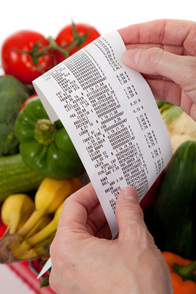 Let's face it, eating completely organic can get really expensive, really quick. In fact, organic nutrients contain on average 25% more nutrients, vitamins, and minerals than non-organic. So eating organic foods will generally add 20% to your bill and many families, like ours, find it difficult to pay this extra cost. BUT we really believe that the premium you pay goes directly to the nutritional value you are getting and strongly encourage our clients to buy organic as much as they can. And in today's edition of What's That?! Wednesdays we'd like to offer a few tips that make eating organic a little easier on the bank account. You can also read our blog post, Top 5 Reasons to Choose Organic & Non-GMO to learn more about why buying organic is worth the extra cost. 8 Tips For Eating Organic On A Budget:
Hope you picked up a couple new tips to save some cash when buying organic and eating clean. Feel free to share your tips with us as well. Happy Saving Friends! ~Billie & Jen
0 Comments
Leave a Reply. |
Billie Shellist, FDN-P
I practice functional nutrition, an approach that allows me to look at your entire health history and help you find the "root causes" of your chronic health complaints. This cuts out the trial and error process and helps you get real symptom relief and resolution! Food is medicine and knowledge is power -I hope you enjoy my anti-inflammatory recipes which are gluten, dairy, and soy free as well as very low grain and sugar. If you'd like to heal from the root cause(s) of your chronic symptoms, try starting with a complimentary 15-minute consultation. Click here to request your free session. |

